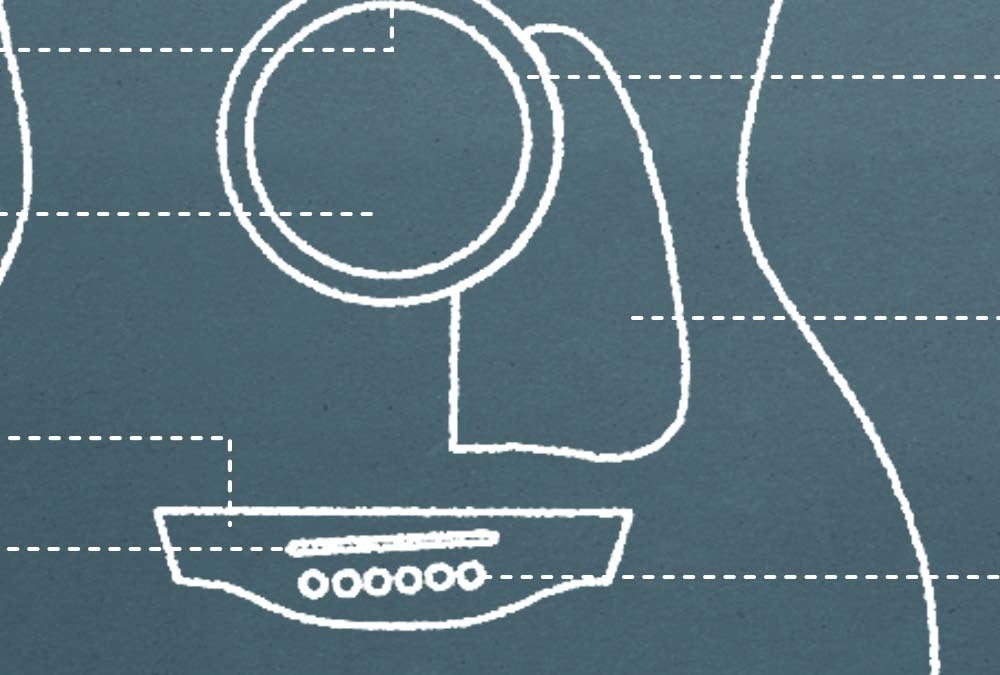
Learning the acoustic guitar? Congrats — you’re embarking on an exciting new journey. One of the most important first steps to learning the guitar is familiarizing yourself with the instrument.
If you don’t know the right words for the guitar anatomy, it’ll be hard to understand what your instructor and fellow guitarists are referring to on the instrument. But don’t fret! Orangewood has you covered with a simple acoustic guitar diagram to map it all out for you.
The Parts of the Acoustic Guitar Explained

The Headstock
The Headstock, or head, is located at the very end of the neck and houses the tuning pegs which you use to tune your guitar. It’s important to have a strong headstock because it needs to support the pull of all your strings, otherwise your guitar will go out of tune easily. Headstocks sometimes come in different shapes and sizes depending on the guitar brand.
Tuning Pegs
Tuning pegs, known simply as tuners, are rooted on the head of the guitar and tighten or loosen the string for tuning. Whenever you change your guitar strings, you’ll pull the string through the hole in the tuning peg and wind it around the peg, making sure it stays in place.

Nut
The nut is a small piece of material located between the headstock and the fretboard. The nut helps keep your strings in place and controls how high the strings sit on the fretboard. This helps transmit the sound vibration to the neck of the guitar.
Neck
The neck of the guitar comes out from the rest of the main body and includes the fretboard, frets, headstock, and truss rod.
Fretboard
The fretboard, or fingerboard, is laminated on the neck and is where your fingers push down on the strings to play different chords and melodies. The fretboard is typically made from different wood from the rest of the guitar. The choice of wood can affect the comfort, playing, style, and tone of the guitar.
Frets
The frets are the raised horizontal dividers that separate notes from each other on the fretboard. The standard Orangewood guitar usually has 21 frets.
Fret Markers and Inlays
Most guitars have fret markers inlaid on the fretboard to aid the player in their finger positioning. These can be visually depicted as dots or as custom shapes (also known as inlays). You’ll always know when someone is playing an Orangewood guitar because of our signature "leaf" inlay. These markers differentiate depending on the guitar, but it’s typical to see visual cues on the third, fifth, seventh, ninth, twelfth, and fifteenth fret.

Truss Rod
A truss rod is an adjustable metal rod embedded in the guitar neck that allows you to adjust how much curvature or bow is in the neck. The truss rod impacts the action and playability of your guitar. It’s important to learn how to adjust your truss rod if you notice your guitar feels uncomfortable to play or if it falls out of tune easily. Learn more about adjusting your truss rod.
Body
The body is the biggest part of the acoustic guitar and can come in many different shapes that affect the tone and sound. The most popular body shapes for an acoustic guitar are dreadnought, grand concert, grand auditorium cutaway, parlor, and mini. The body is made up of a soundboard (top), back, and sides. The soundboard top vibrates to produce sound, which is why the tonewoods used are important to consider as well as the wood used on the back and sides.
Tonewood
The tonewood is the wood used on the soundboard top of the guitar's body. Besides just looking pretty, wood produces a certain sound that has a slightly different tone than another wood type. Spruce, mahogany, and pau ferro are some common ones you’ll see on our Orangewood Guitars.
Sound Hole
The sound hole is specific to acoustic instruments and is the opening on the body of the guitar that allows for sound to reverberate on its own. Though sound also comes out through the rest of the body’s surface area, the sound hole allows the sound to travel freely out of the guitar, producing a beautiful acoustic sound.
Rosette
The rosette is the decorative pattern inlaid around the sound hole. Orangewood uses a few different rosette patterns which you can use to distinguish our guitar collections from one another. Check out Melrose for modern elegance or Highland for some vintage-inspired feels.
Pickguard
The pickguard is located next to the sound hole and is used to protect the guitar's wood from any damage caused by the pick. Pickguards come in many different shapes and sizes to customize the look of the guitar. At Orangewood, all of our models come with an optional pickguard in the gig bag, so you can put the finishing touch on your guitar.

Bridge
The bridge holds and anchors the strings at the opposite end of the guitar from the neck. It helps carry the sound vibrations of the strings to the rest of the guitar.
Bridge Pins
Bridge pins are a part of the bridge and are what holds the strings in the bridge. They are typically offered in a few different material options. When changing your strings, you can take the bridge pins off and on.
Saddle
The saddle is the small piece of material attached to the bridge of the guitar. The saddle transfers the string vibrations from the bridge to the soundboard and acts as a spacer for the guitar strings.

Want to learn more about the acoustic guitar? Check out our Learning Guitar Series for everything you need to know to start playing guitar today.










